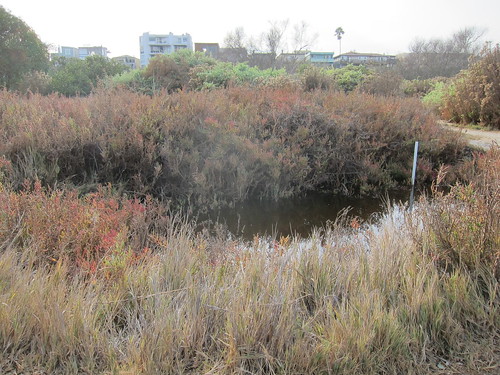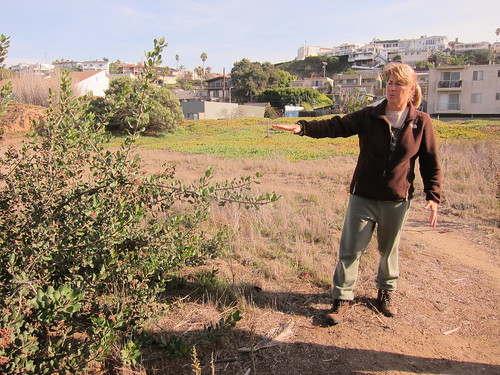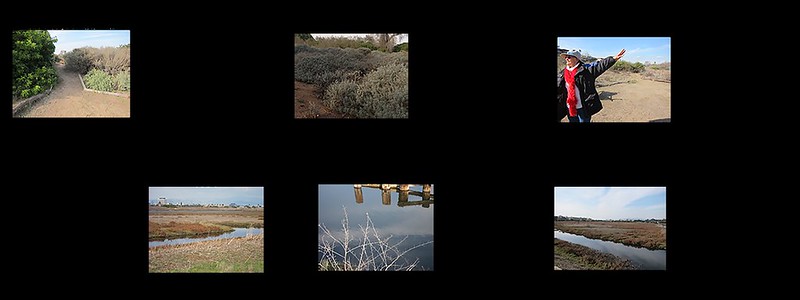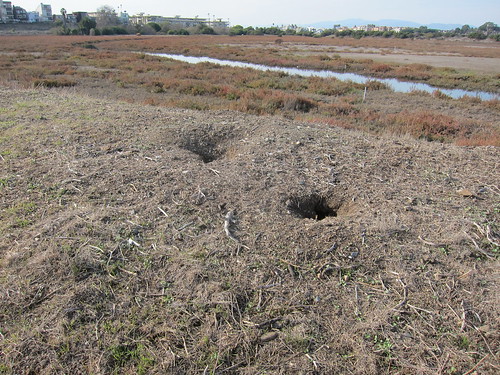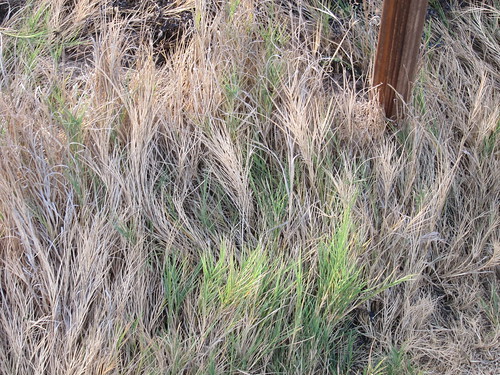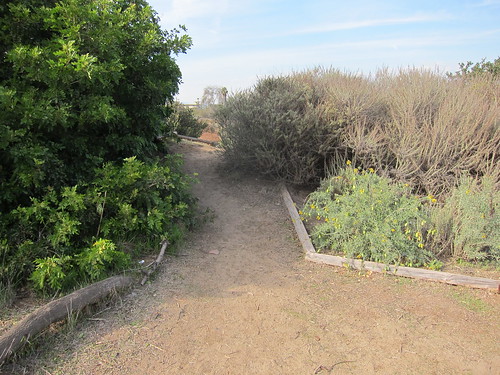In a special election this month, Sebastian Ridley-Thomas became one of the youngest members of the California State Assembly, at at age 26. He is the son of Board of Supervisors member Mark Ridley-Thomas.
Palazzolo Raquel Daycare off of Culver Boulevard has been serving the Culver City community for over thirty years. The owners and their loyal customers share why families have continued turning to this affordable, home-style care.
Street art decorates the walls of many buildings on Washington Boulevard in Culver City. From garbage galleries to interactive murals, the streets of Culver City offer a variety of offbeat pieces that art enthusiasts and community members can enjoy.
“Only one percent of the wetlands are left in LA County, this is it , Ballona Wetlands,” said Lisa Fimiani.
One Southern California non-profit is working to preserve this one percent through the 300 acres of the Ballona Wetlands south of the Ballona Creek.
“ One of our ultimate goals is to have the Ballona Wetlands fully restored,” said Friends of Ballona Wetlands executive director, Lisa Fimiani.
When Fimiani moved to California she wanted to find a way to stay involved with nature and after volunteering with Friends of Ballona Wetlands she found her niche.
“ I really enjoyed working out in the wetlands, “ said Fimiani.
Fiminani finds this work so important because Coastal wetlands act as a water purifier, flood buffer, and most importantly to the Ballona wetlands, a habitat for native plants and animals.
“ Most significant aspect of the those wetlands to LA is the fact that they house some of the last native species,” said University of Southern California Environmental Studies professor Kristen Weiss.
Kristen Weiss said that because coastal wetlands act as a natural protector from sea level rise there needs to be more focus put on preserving them in California because of the small amount left.
Only around five percent of the United states wetlands are left in California. Weiss said this is partly because of the large amount of land California has developed.
“ California wetlands are in high peril,” said Weiss.
According to a recent study conducted by the U.S. Fish and Wildlife Service and National Oceanic and Atmospheric Administration between the years of 2004 and 2004 the Pacific coast lost 5,220 acres of coastal wetlands.
On a greater scale the United States lost 360,720 coastal wetlands in those years on an average of 80,000 per year.
The study titled “ Status and Trends of Wetlands in Coastal Watersheds of Conterminous United States” used 2,614 random 4.0 square mile plots to conduct the study.
“ Ballona Creek and wetlands are the last few remnants of wetlands we have left,” said Weiss. These channels can be seen from their viewing platform where Fiminani said it’s glaringly apparent that the Ballona wetland is a degraded.
“The tide gates that let the salt water in from the creek is still not enough to bring back the habitat. We still see European grasses out there that need to be pulled,” said Fiminani.
Friends work to restore the original habitat and keep out invasive plants through a combination of education and restoration. They educate a range of people from pre-K to post-graduate.
Fiminani said they have had over 9,000 people coming out to their programs in the wetlands for a variety of reasons from participating in tours, to walking the wetlands passively , or specifically for restoration events.
Friends specifically involves the students of LA county schools in their work with the wetlands by taking them through specific stations ranging from water ecology, natural and cultural history, and habitat restoration.
“ This is a great outdoor class room for children where they actually get to see the beach because many of them don’t know where it is,” said Jeri Rozadilla.
Rozadilla is a docent for the Friends of Ballona Wetlands and said these educational programs are a way to get children to care about the environment , the birds, the animals, care about something other than themselves,” said Rozadilla.
Fiminani said having students cleaning up and experiencing the wetlands leaves with a memory they can repeat over and over again.
“ There’s always a teachable moment,” said Fiminani.
Along with walks for students Friends also gives tours of the dunes, salt marshes, and freshwater marsh where visitors have a chance to study birds, butterflies, insects, and amphibians living in the wetlands. Fiminani said visitors can see the natural habitat coming back through the lemonade berry and California sage bushes growing throughout the eight acres of dunes.
“ They feel it and touch it, and they smell it and they go wow this is really cool, we give them a message that they can grow these plants back home,” said Fiminani.
These tours are important to the Friend's educational programs because the study found that the pacific coast is losing these marshes. The study found that the loss of saltwater marshes in California was 40 acres while the freshwater marsh loss was 5,120 acres.
Fiminani said some of this loss is because of the high bacterial levels in the water. These high levels are come from the misplacement of animal and bird feces in the water. Friend’s is currently trying to lower these bacterial levels by setting up an educational program that can explain to people where to and not to let their animals go to the bathroom.
“It’s kinda like death by 1000 blows. It’s not just one thing , its not one patch non-native plant that’s gonna do native wetland, it’s all of it combined together,” said Fiminani.
Friends fought to preserve these marshes and eventually negotiated a plan with the city of Play Vista to create a freshwater marsh. Fiminani said this freshwater marsh is a great example of how restoration can bring back natural habitat. In 2003 there were 70 species of birds and by 2008 there where 15 nesting and of the 15 nesting there were five indicator species.
“ ... which means they’re very rare, they’re very picky about their habitat, that means this restored freshwater marsh was done right, was done successfully,” said Fiminani.
Fiminani said it’s about actually bringing back natural habitat and not just making it look presentable.
“ Wetlands serve a really important function as a place for native species such as plants, birds, and other wildlife to live,” said Weiss.
Another large part of Friend’s restoration is working on the eight acres of dune habitat at the Ballona Wetlands ecological reserve. Their volunteers pull evasive plants such as European grass so that native plants are able to grow back. Fiminani said part of the magic of the dunes is that when non-native plants are pulled out native seeds have a chance to come back.
“ I think we do need that restoration of native species,” said Weiss.
Friend’s help the process of returning native species back to the habitat by benchmarking indicator species. In the dune habitat volunteers efforts were rewarded when the native species, the El Segundo blue butterfly, of the natural habitat returned.
“ The butterfly has been in the habitat 3 years in a row and the pop is growing so we are ecstatic about that because it shows direct restoration of degraded habitat brings back unusual and endangered species,” said Fiminani.
Their work continues outside of the wetlands by providing information on how people can make a difference at home. People can help preserve this natural habitat by growing plants that naturally grow in the wetlands back to their home gardens. Fiminani said these plants are great to bring back to their gardens because they’re drought tolerant, don’t use pesticides, or fertilizer and can end up in the watershed.
“ Which all ends up in the Ballona Creek and then in the Ballona Wetlands,” said Fiminani.
Overall the nonprofit wants to make sure that the wetlands are restored properly. Friend’s encourage proper restoration practices by encouraging landowners to create pocket parks.
Pocket Parks are areas that have trees and bushes that can potentially be used as a home for birds and wildlife where they can nest, look for food, and roam.“ Recreating pocket parks that have been depleted of massive ecosystems can bring back species and animals,” said Fiminani.
Fiminani said that restoring the wetlands is a balancing act and is about micromanaging, staying on top of it, and knowing your watershed.
“It’s going to try and restore itself , we can help it along, and we’ve gotta to it carefully,” said Fiminani.


